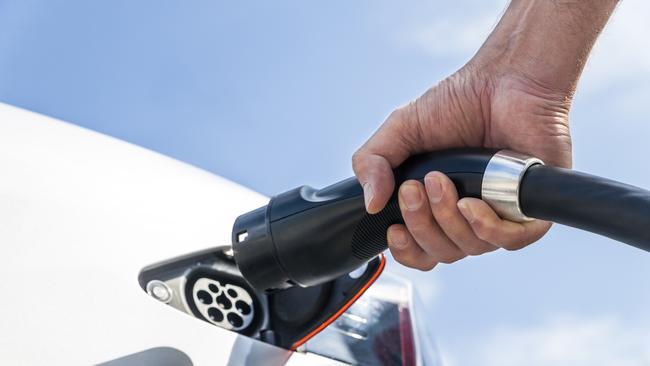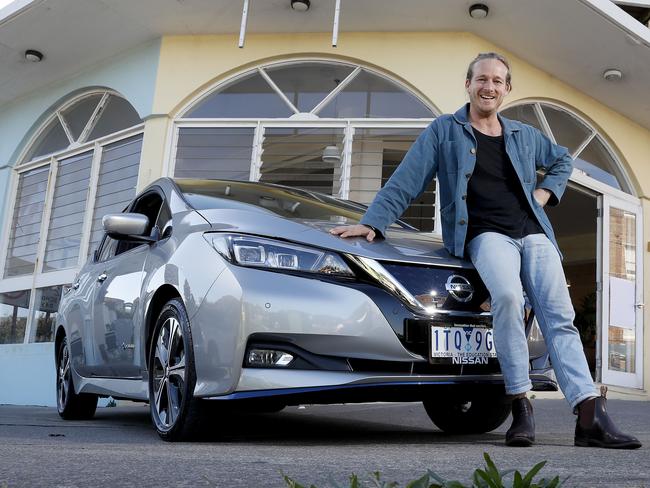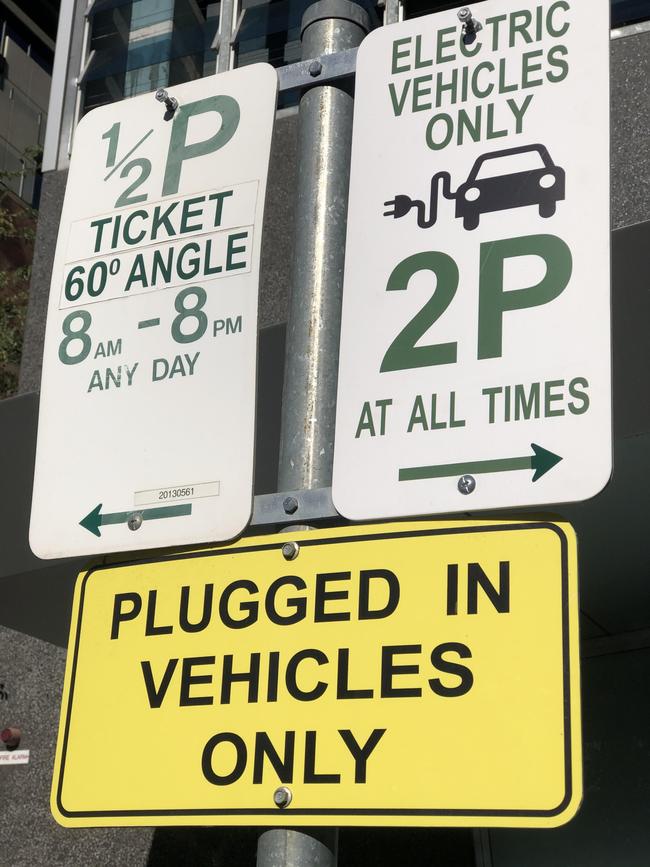Charging up: EV infrastructure on the rise
Range anxiety could soon be a thing of the past, with electric vehicle drivers promised they’ll be able to will travel anywhere in Australia within five years ... well, almost anywhere.

The golden years of driving an electric car and going wherever you want are around the corner, with EV chargers being increasingly rolled out around the country.
The EV rollout around Australia is not the product of a grand master plan, rather the combined efforts of different companies and organisations making it come together.

Governments are contributing to the rollout, such as the Queensland government with its Electric Super Highway of 31 fast-charging sites from Coolangatta to Cairns, and WA plans to build the country’s longest charging network. Other states are investing too.
The federal government has announced a Future Fuels Fund which in the first round will offer $16.5m to fund public EV fast charging. Companies get to bid for preferred locations.
■ READ THE LIST: 100 innovators 2021
In its annual report last year, the Electric Vehicle Council reported 1950 standard charging stations (less than 50kW) at more than 1200 locations, a 16 per cent increase since July 2019, and 350 fast and ultra-fast charging stations (50kW and over) at more than 150 locations, a 42 per cent increase since July 2019.
Range anxiety remains a hurdle to the mass adoption of electric cars. EV drivers might travel short distances to shops and schools most times, but running out of power in the midst of nowhere on a road trip is a daunting prospect.

That and the price of EVs — tens of thousands of dollars more than their petrol or diesel equivalent — are barriers to buying, and a wider EV adoption. Even if you buy a relative cheapie, EVs such as the MG ZS EV ($44,000+) and Nissan Leaf ($54,000+) have lower ranges — around 270km.
Nevertheless, the charging infrastructure to counter these concerns is improving.
Chargefox, ChargePoint, Evie Networks, EVUp — a partnership between Ausgrid and Jolt, and Tesla are among providers of charging infrastructure.
Chargefox says its 22 station-strong, ultra-rapid charging network offers travel between Adelaide, Melbourne, Sydney and Brisbane, with some stations in WA and Tasmania.
Evie Networks plans ultra-fast charging stations mainly along a corridor from Melbourne to Toowoomba in southeast Queensland.

PlugShare is among several smartphone apps you can use to track these chargers down. Its map of Australia shows charging points dotted mainly around coastal areas, although there is some inland support for EV charging such as along the Stuart Highway from Alice Springs to Darwin. PlugShare’s map shows eight charging networks offering chargers with 11 plug types.
If you have a car just with the CHAdeMO connector, you’ll find around 45 charging points mainly in central and northern Victoria, and a few along the NSW and southern Queensland coast. CHAdeMO connectors are associated with Japanese EVs such as Toyota, Mitsubishi and Nissan.
One factor for buyers is the ability of a prospective car to link to different charging options, with different power ratings and AC or DC options. Fortunately many cars use multiple connectors.

The Nissan Leaf uses CHAdeMO DC fast charging which can replenish the battery from 20 to 80 per cent in 60 minutes, as well as the common Australian and European Type 2 (Mennekes) AC slower charger which Nissan says takes 7.5 hours to fully charge the Leaf.
Tesla has its own chargers including DC superchargers. It claims to have rolled out more than 25,000 superchargers worldwide and about 250 in Australia. Ultra-fast V3 superchargers can deliver up to 120km in five minutes. Tesla cars also can use common Type 2 chargers.
Fortunately this is less of a problem now, says Tim Washington, CEO of Melbourne-based Jet Charge. Plugs are becoming standardised with Type 2 for AC charging, he says. Jet Charge also offers Combined Charging System 2 (CCS2) and CHAdeMO for DC charging.
The company has carved out a niche by partnering with EV car brands to offer a one-stop shop for buying a vehicle and charger together.
Washington says Jet Charge also installs chargers in homes and in the car parks of apartment buildings. That includes installations at every parking bay in a building. Installing cable trays is one way of getting power to each parking space indoors.
“We do retrofits for apartment buildings every day, at the moment,” he says. “They (building managers) recognised that if they don’t do this, they can start losing residents. We’re also doing new apartment charging stations in every spot.”
While planning a long distance EV trip requires forethought now, Washington says he expects EV owners will travel anywhere they want within five years — well, almost anywhere. “Over 90 to 95 per cent of trips will be covered by electric vehicle charging infrastructure but that last five per cent will cost a lot to address.”
Other organisations are rolling out charging infrastructure. In NSW, the NRMA has been building its own network of fast chargers to service regional communities since 2016. NRMA head of media Peter Khoury says about 40 chargers are operating so far.
“We’re trying to connect regional communities so they don’t miss out,” Khoury says. He says the NRMA is placing chargers about 150km apart along highways. That will aid tourism in the future.
The NSW government is starting to invest in charging infrastructure as well, he says.
The NRMA owns a stake in Chargefox, as does the RACV, RACQ, RAA, RAC and RACT, along with Wilson Transformers and the founder of Carsales, Greg Roebuck. Chargefox also receives grants from the Victorian government.

To join the conversation, please log in. Don't have an account? Register
Join the conversation, you are commenting as Logout